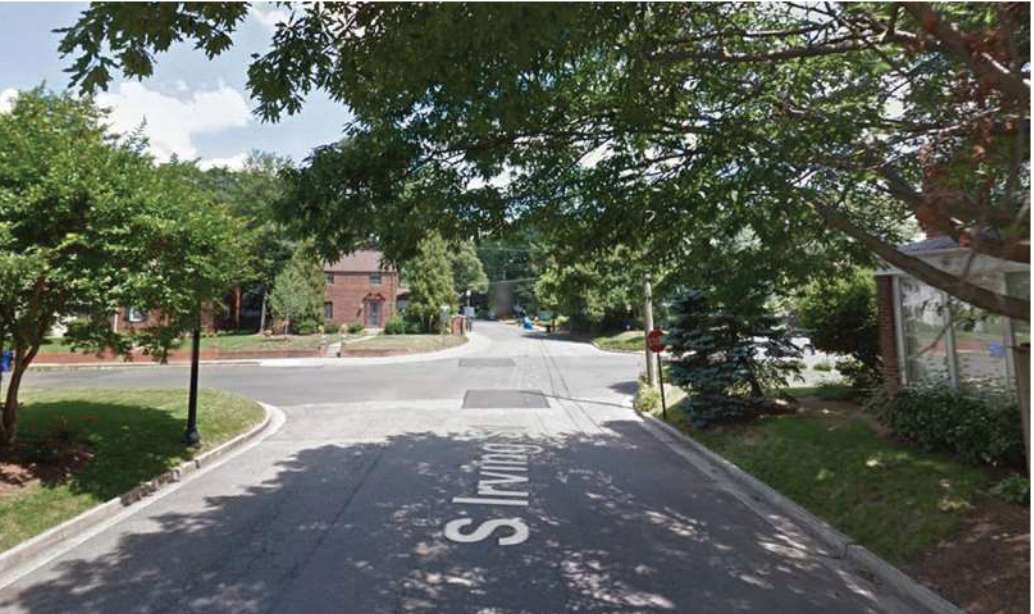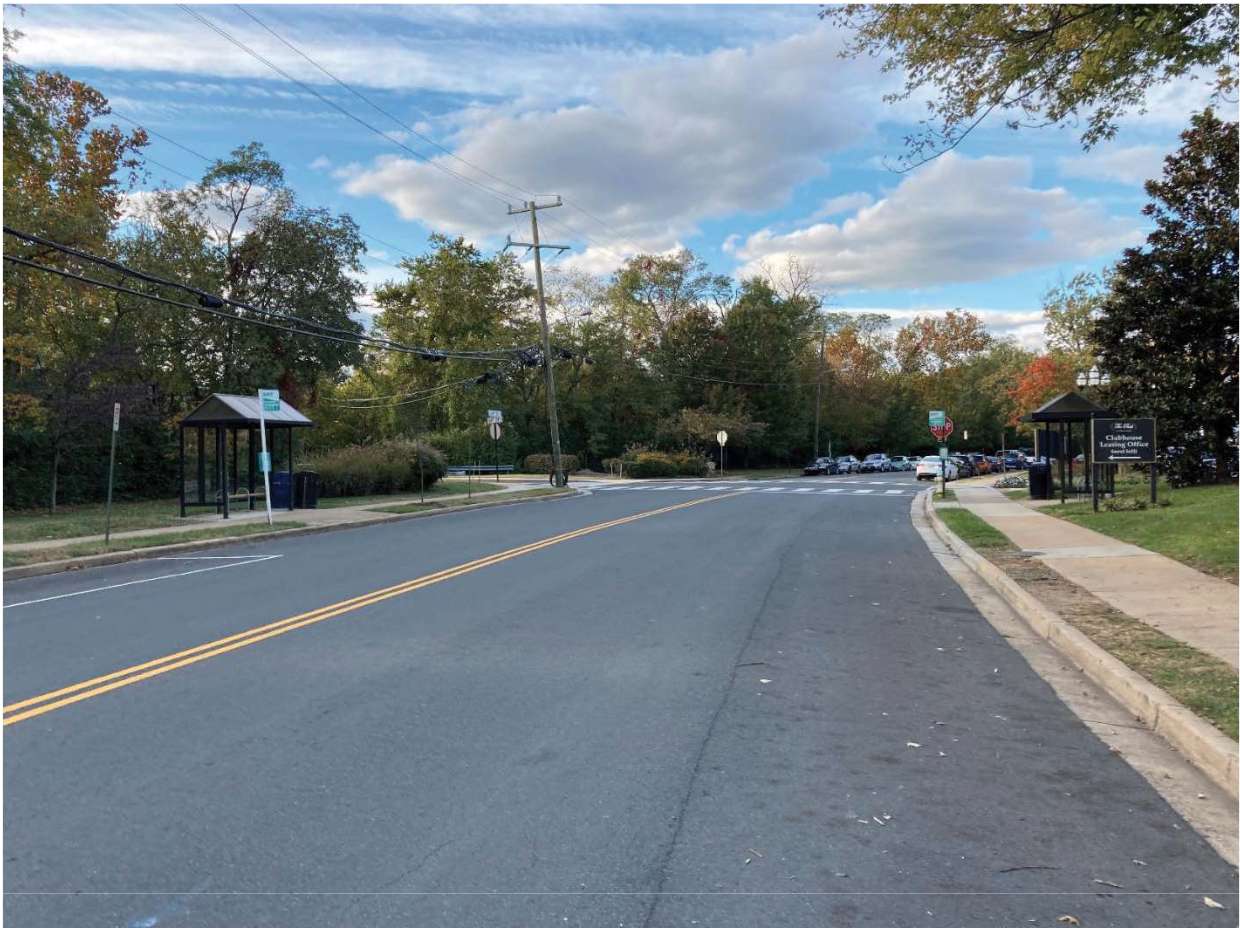Arlington residents may see improved sidewalks and pedestrian crossings in a few neighborhoods in the near future.
The County Board approved funding for four projects at its meeting on Saturday (June 18).
Among the projects:
- Constructing one block of missing sidewalk on S. Irving Street between 6th and 7th Streets S.
- Constructing a section of accessible sidewalk at the service alley entrance of the AT&T building on 9th Street S. between S. Walter Reed Drive and Highland Street, near Columbia Pike.
- Constructing new transit stops, intersections, mid-block pedestrian crossing and bicycle racks at three pedestrian crossings on 28th Street S. between S. Meade Street and 26th Street S.
- Constructing pedestrian crossings on N. Fairfax Drive between Arlington Blvd. and N. Barton Street, near Rocky Run Park.
The four projects are projected to cost around $1.7 million in total, according to a board report.
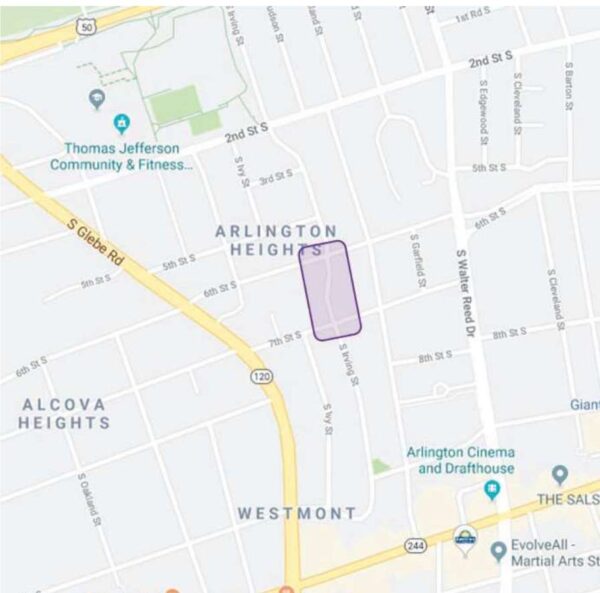
The proposed project on S. Irving Street is set to build a continuous accessible sidewalk on one side of the road, between 6th Street S. and 7th Street S., which includes accessible curb ramps, existing streetlamps and on-street parking.
A little over 50% of local survey respondents believed the proposed project would make them feel “much safer” while walking there. Some expressed concern about the distance and visibility of crossing 7th Street S., according to the project’s community engagement summary.
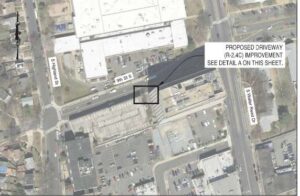
The proposed project on 9th Street S. would modify the driveway to the AT&T building so that its curbs can be in an accessible sidewalk condition compliant with federal law. The county collaborated with the company for the design plan.
“This project will support a safe walking environment adjacent to the AT&T building, where there is high traffic volume and children at play in the area,” AT&T Mid-Atlantic Region Operations Manager Robert Weaver stated in a letter of support.
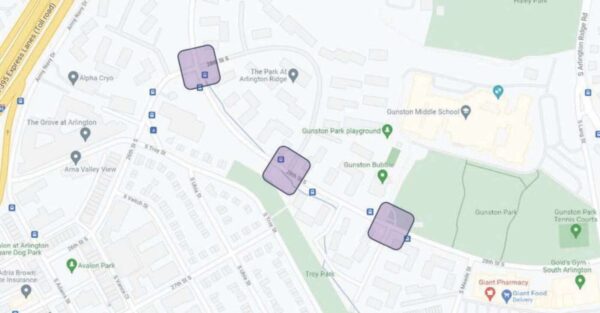
The proposed project on 28th Street S. aims to reduce speeding and shorten the distance of pedestrian crossing by narrowing the roadway. This location was high on the county’s list of potential reconstruction because it has a history of car crashes and speeding.
Thirty percent of respondents who walked in that area believed the proposed project would make them feel “much safer.” Many respondents also expressed concern for cyclists along that road. However, the county determined that the road is too narrow for a bike lane, according to the project’s community engagement summary.
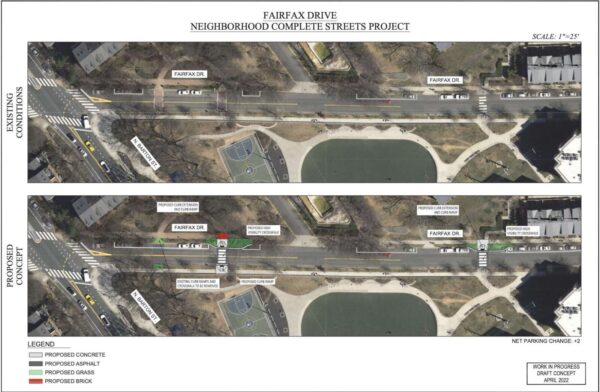
The proposed project on Fairfax Drive, near Rocky Run Park, aims to increase the visibility of pedestrians crossing the street and shorten the crossing distance. It also proposes removing the mid-block crossing closest to the intersection with N. Barton Street.
Many people who gave feedback to the county raised concerns with the crossing removal, however. Almost 20% of survey respondents who walked in the said the proposed changes would make them feel less safe when walking, according to the project’s community engagement summary.
But the county will still remove it because it is less than 100 feet away from a crosswalk controlled by a “All Way Stop” sign.
All four projects were part of the Neighborhood Complete Streets Program, which aims to “make streets safe for all users of all ages and abilities” and “preserve or enhance neighborhood character,” according to its commission’s website.
The Arlington County Transportation Commission earlier voted unanimously to support the projects, but opined that the Irving Street could have been better.
More from a letter sent to the Board by the Transportation Commission, below.
The projects proposed are good and will improve safety. The new proposed design of the Irving Street project, however, is significantly worse than what was previously proposed. The original design of this project included a dedicated landscape strip between the sidewalk and the street. This landscape strip would have increased pervious surface, provided a place for snow to be piled, and prevented streetlights and street signs from blocking portions of the sidewalk.
Unfortunately, this original design was tossed out on account of the 20′ clear width rule of the Virginia Fire Code, an issue that the Neighborhood Complete Streets Commission and this Commission have raised with the County Board and County Manager in the past. This is yet another example of street safety and accessibility being harmed by this rule with no clear or convincing argument from our fire marshal quantifying what safety benefits are gained by doing so. The 20′ clear width rule has been cited to rip out street parking that had safely been in place for years, encouraged speeding by unnecessarily widening streets, and prevented the installation of pedestrian refuge medians and protected bike lanes.
Sometimes the rule is waived, but the process for doing so is fully-shielded from public eyes, with no stated criteria, priorities, or guidelines. According to Neighborhood Complete Street Commission Chair Elisa Ortiz, previous County Managers have granted blanket waivers to the Department of Transportation to go below a 20′ clear width to meet public safety goals, an option that is baked into the text of the Fire Code, allowing fire officials to “permit modifications to the required access widths . . . where necessary to meet the public safety objectives of the jurisdiction” but the current County Manager has not done so.
Numerous streets in Arlington violate the 20′ clear width rule and many have done so for decades. Most could be brought into compliance simply by adding no parking signs to one side of the street. If the 20′ clear width rule were critically important for safety, this would have been done long ago. If street parking availability trumps the 20′ clear width rule, surely better and safer bike & pedestrian infrastructure should?
The 20′ clear width rule is not just a problem in Arlington. Baltimore removed it from their Fire Code for similar reasons. For more on the 20′ Clear Width rule in Arlington, see this blog post.
Traffic fatalities are 200 times the magnitude of fire fatalities. It is critical that we look at how we are balancing these conflicting safety needs in Arlington, or we may be saving one person from a fire, at the expense of 10 people in additional car crashes. As such, the Commission recommends that the County Board direct the County Manager to either waive the 20′ clear width requirement of the Virginia Fire Code at the Department of Transportation’s discretion or initiate a community process to formulate clear guidance on when waivers of the clear width requirement will be granted.


